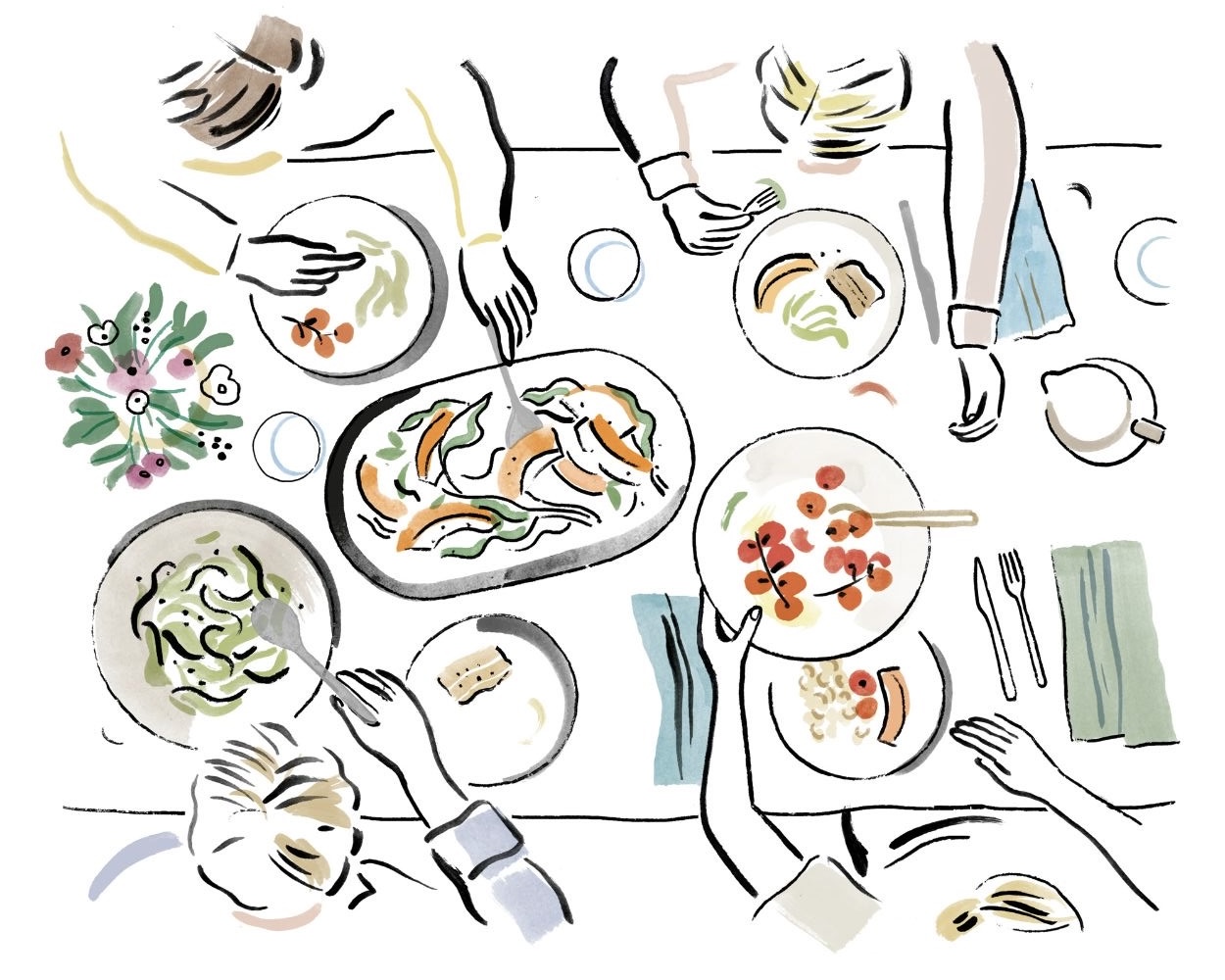What Does Normal Eating Actually Look Like?
In today’s world of diet culture and ‘What I Eat in a Day’ videos, it can feel confusing and overwhelming to know what it means to eat normally. Often, we learn what disordered eating looks like, but rarely do we discuss what a positive relationship with food actually involves. Everywhere we turn, someone is offering a new set of rules: eat this, not that; only eat during these hours; count your macros; track every bite. With so much conflicting information, the simple act of feeding ourselves has become surprisingly complicated.
As a therapist who specializes in eating disorders, I often hear clients say they want to stop thinking so much about food and they've forgotten what 'normal' eating even feels like. But, when we're bombarded with external messages about what, when, and how much we should eat, we lose touch with our own internal wisdom about food. Rather than looking externally to define normal eating habits, we must look inward.
Normal Eating
Normal eating was a term first coined by Ellyn Satter, a dietician and family therapist, as a way to evaluate our relationship with food. Normal eating varies from person to person, but some examples include:
- Normal eating is eating when you are hungry and stopping when you are satisfied.
- Normal eating is overeating sometimes and undereating other times.
- Normal eating is trusting your body to tell you what, when, and how much to eat.
- Normal eating is being thoughtful about food without being restrictive or without food overtaking your thoughts.
Sometimes, rules and norms we learn growing up can contradict the definition of normal eating. Take time to reflect on the food rules and norms you follow today and where you learned them. Are these rules allowing you to listen to your body or do they override your physical cues?
Normal Eating is Flexible.
Flexibility means your eating isn't governed by rigid rules. You might eat more some days and less on others. You might choose a salad for lunch because it sounds refreshing, or you might choose pizza because you're craving it. Neither choice is inherently "good" or "bad"—they're just different responses to different needs and desires.
This flexibility also extends to how you eat. Normal eating might mean eating three meals and snacks, or it might look different depending on your schedule, culture, or preferences. It includes eating food you enjoy, not just food you think you "should" eat. And crucially, it means being able to adapt when things don't go as planned—like eating breakfast later than usual or having dessert before dinner at a party—without anxiety or guilt.
Normal eating is Intuitive.
One way to think about being intuitive with food is to look at how children approach eating. At a meal, a child may eat their whole serving and ask for more, only to eat one more bite. Most children haven't yet internalized diet culture messages, allowing them to meet the needs of their body. As adults, intuitive eating is the ability to tune into your body's signals and trust them. This requires us to listen to physical cues for hunger and fullness, while still honoring the multifaceted role food serves in our lives. Sometimes we eat for pleasure, for connection, for comfort, or for celebration. Normal eating makes room for all of these experiences without judgment.
Putting it Together
When flexibility and intuition work together, eating becomes less about following external rules and more about responding to your internal and external cues in a balanced way. It means you can enjoy food without guilt, nourish your body without obsession, and make choices that honor both your health and your happiness.
It's important to note that if you've struggled with disordered eating or have a complicated relationship with food, reconnecting with normal eating takes time and often requires support. Your internal cues may feel quiet or confusing at first, and that's okay. Learning to eat normally again is a process, not a destination.
If you find yourself feeling anxious about food, spending excessive time thinking about eating, or feeling controlled by food rules, therapy can help. Working with someone who specializes in eating and body image concerns can provide the guidance and support needed to rediscover what normal eating means for you—not according to diet culture, but according to your own body and life.
Reference: Satter, E. (1986). "How to Eat." Originally published in the Ellyn Satter Associates newsletter. Available at: www.ellynsatterinstitute.org











